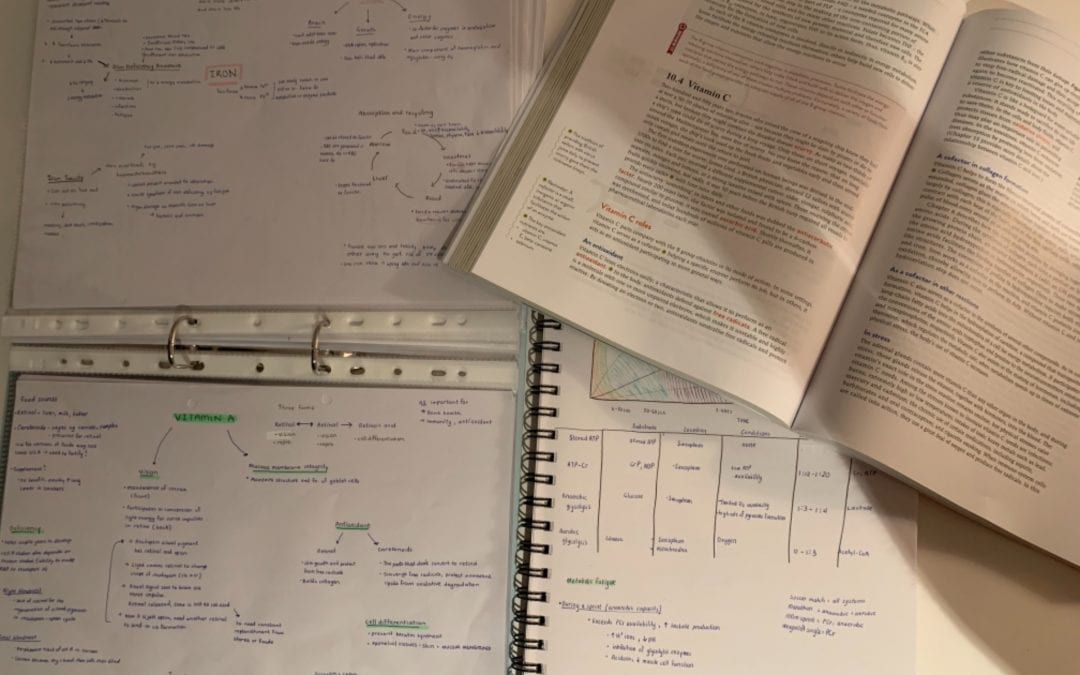Studying doesn’t come with a definite manual because we all learn differently so the experience is unique to us all. However, one thing that is for sure is that ‘active’ studying trumps ‘passive’ studying. If you are interested, I would really recommend trying out these 3 unique tips which you may not have heard before!
- Write your notes on blank paper
There is something really freeing about writing on blank paper, compared to lined paper. This might seem like a bit of an extreme analogy, but it reminds me of the saying ‘the world is your oyster.’ With blank paper you are completely unrestricted- you can write wherever you want, draw diagrams and mind maps more easily, and write vertically or in different sizes without it looking awkward.
I like using a visual arts journal to keep everything together, but you could also use loose paper and binder, or an app if you prefer to write your notes digitally!
- Read your textbook backwards
If you are assigned 10+ worth of textbook pages to read after every lecture, passively going through the whole assigned reading can be quite a challenge especially if the language is really academic and technical. You might have to re-read it multiple times to get a solid grasp of the material.
The following method, which I discovered early this year, helps to keep you focused, engaged, and increase your long-term retention. It is called the ‘SQ4R’ method, which stands for ‘survey, question, read, respond, record, review’.
It might seem like you are reading your textbook backwards, the opposite of what you would normally do, but this article gives a really simple walkthrough of the process. It does take a little while to get used to, but once you are in the habit of it, I think it feels really good!
https://uwosh.edu/car/wp-content/uploads/sites/37/2018/01/SQ4R-Method.pdf
Put simply, SQ4R combines several highly effective study methods into one- from questioning yourself, to summarizing key concepts, speaking out loud, and spaced repetition.
Once you have completed these steps, if you then normally go through it again, hopefully it will be easier to understand despite only being the second time you’ve read it!
- Blurting
Yes it does sound odd and quite funny!
For this to work well, it is important to be in a good headspace, have a clear mind, and be free from any distractions.
All you need to do is take a blank piece of paper and think of a topic or concept. Without any notes, quickly make a messy mind-map of every single thing you can remember learning about it. This forces your brain to sort through its growing piles of knowledge and reach into the back of your mind’s filing cabinet.
Once you’ve done this, compare your ‘blurted mind-map’ to your notes and then from memory again, try to add them into your mind-map.
Ultimately, the best study method will always be the one which works best for you.
These 3 methods are what I have found useful over my two years at university, but if they don’t work for you- not to worry! There are hundreds of ways you can study actively… just make sure you’re not holding yourself back by re-reading and highlighting your notes. After all, our brains are designed to be curious, to think, to question, and solve problems.
